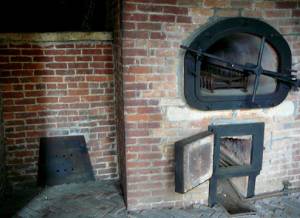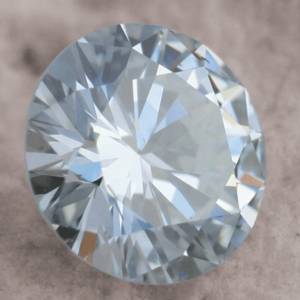December 9 is Cremation Day
 Cremation Day
Cremation Day
On December 9, 1792, the first open air cremation on record in the United States took place in Charleston, South Carolina. The decedent was Colonel Henry Laurens, former president of the Continental Congress, who had once co-owned the largest slave trading company in North America.
Laurens, who suffered from a fear of being buried alive, stipulated in his will that his body be burned on the grounds of his plantation. (One wonders why it never occurred to him to be afraid of being burned alive.) His ashes were then placed in an urn and buried in the family cemetery.
The plantation is now a Trappist monastery, exposed by PETA in 2007 for starving chickens for weeks to increase egg production. Now the monks raise mushrooms instead.
Humble Beginnings
Cremation dates back to ancient Greece and Rome where urns called amphorae were used to store the ashes of the cremated. The Greeks buried them under mounds of earth and stone. Romans built columbaria, vaults containing niches to hold the urns.
Vikings burned the dead atop funeral pyres. They did not place the deceased in boats and set them ablaze. An untended fire over water could not reach or maintain a temperature high enough to incinerate a body, leaving charred remains to be picked apart by birds or washed ashore.
Also, boats were much too valuable to burn every time someone died. They would have spent all their time shipbuilding. Ship captains were sometimes buried with a small ceremonial ship. One of these boats dating back to the 9th century was unearthed in Norway in 1904. It contained sacrificial women and livestock but no burnt timber. Sorry, Hollywood.
The first cremation chamber, called a retort, was constructed by Professor Ludovico Brunetti and introduced at the Vienna Medical Exhibition of 1873. He displayed the furnace with four pounds of cremated human remains and a sign that read: “Vermibus erepti–Puro consumimur igni” (Saved from the worms–Consumed by the purifying flame).”
Dr. Francis J. LeMoyne constructed America’s first modern crematory in 1876 on property he owned in Washington, Pennsylvania, after the local cemetery refused to host it. Housed in a simple brick building, it remains in remarkable condition 139 years later. (Tours are available the second Saturday of May through September from 2 to 4 pm.)
As luck would have it, the New York Cremation Society had just come into possession of its first dead body, Baron Joseph Henry Louis Charles De Palm, a German aristocrat who had apparently died without a penny to his name(s).
The society contacted LeMoyne and requested the use of his facility, seeing it as an opportunity to showcase the superiority of cremation. On December 6, 1876, surrounded by a throng of reporters, scientists and physicians, the baron’s body was produced.
Unfortunately, DePalm had been dead for six months, poorly preserved with potter’s clay and phenol. The gruesome sight of the withered, shrunken corpse did not further the cause. Though the procedure went well, the herbs and pine branches could not alleviate the stench. Newspaper accounts were less than glowing.
It’s said that Dr. LeMoyne built the crematory due to his own fear of being buried alive. (Honestly, does anyone look forward to that possibility?) He died in 1879 and, in accordance with his wishes, was cremated on the premises.
Happy Endings
Cremation’s acceptance grew slowly. Between 1876 and 1901, 25 new crematories were built around the U.S. There were 52 by the time of the Cremation Association of America’s founding in 1913. More than 10,000 cremations took place that year.
Bronze urns became fashionable in the 1920s, some so heavy the floors underneath had to be reinforced. Various styles were favored across the country. Round ones were preferred in the Northeast while rectangular and book shapes sold well on the West Coast. In the Midwest, book, box and vase models were popular, according to Jason Engler, Senior Cremation Advisor to the National Museum of Funeral History, which can be rented for parties and has a lovely gift shop with great items like this “Any Day Above Ground is a Good One®” beer koozie.
In the 1980s, bronze prices soared and urns made of aluminum, cloisonné and other lower-cost materials made post-cremation receptacles affordable to the masses. Times have changed since then: Of the 1.4 million people cremated in the U.S. in 2014, over 300,000 chose to be scattered rather than stored.
If only they’d known about LifeGem, a company that turns ashes into a cocktail ring. Just seal no more than eight ounces of your loved one in a plastic container and ship. (Add a lock of your hair to create a “unity LifeGem heirloom diamond.” Why should the dead have all the fun?)
The carbon is extracted and superheated, which “converts your loved one’s carbon to graphite with unique characteristics and elements that will create your one-of-a-kind LifeGem diamond.” What kind of graphite? Like a pencil? A fishing rod? Fuselage? A neutron moderator in a nuclear reactor?
Specialists transfer the graphite to a machine that will heat and compress it for several weeks. At this point, any resemblance to your loved one is purely ceremonial, DNA long gone, so it’s faceted and etched with your choice of messages to guarantee its uniqueness.
A half-carat colorless LifeGem costs $7,899. Volume discounts are available. Now everyone can have a piece of Grandpa. Just make sure you take him off when you wash the dishes.
Happy Cremation Day!
More death-related holidays:
Sylvia Plath Day
Create a Great Funeral Day
Plan Your Epitaph Day
Whatever Happened to Visit a Cemetery Day?
![]()













Leave a Reply
Want to join the discussion?Feel free to contribute!